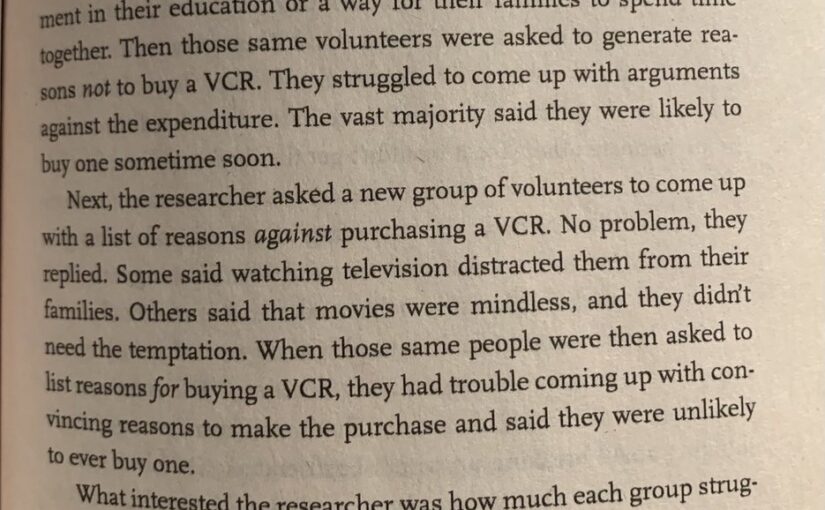One important study of the power of such decision-frames was published in 1984, after a researcher from Northwestern asked a group of participants to list reasons why they should buy a VCR based on their own experiences. Volunteers generated dozens of justifications for such a purchase. Some said they felt a VCR would provide entertainment. Others saw it as an investment in their education or a way for their families to spend time together. Then those same volunteers were asked to generate reasons not to buy a VCR. They struggled to come up with arguments against the expenditure. The vast majority said they were likely to buy one sometime soon.
Next, the researcher asked a new group of volunteers to come up with a list of reasons against purchasing a VCR. No problem, they replied. Some said watching television distracted them from their families. Others said that movies were mindless, and they didn’t need the temptation. When those same people were then asked to list reasons for buying a VCR, they had trouble coming up with convincing reasons to make the purchase and said they were unlikely to ever buy one.
What interested the researcher was how much each group struggled to adopt an opposing viewpoint once they had an initial frame for making a decision. The two groups were demographically similar. They should have been equally interested in buying a VCR. At to very least, they should have generated equal numbers of reasons to buy or spurn the machines. But once a participant grabbed on to a decision-making frame—This is an investment in my education verses this is a distraction from my family
Excerpt from: Smarter Faster Better: The Transformative Power of Real Productivity by Charles Duhigg


